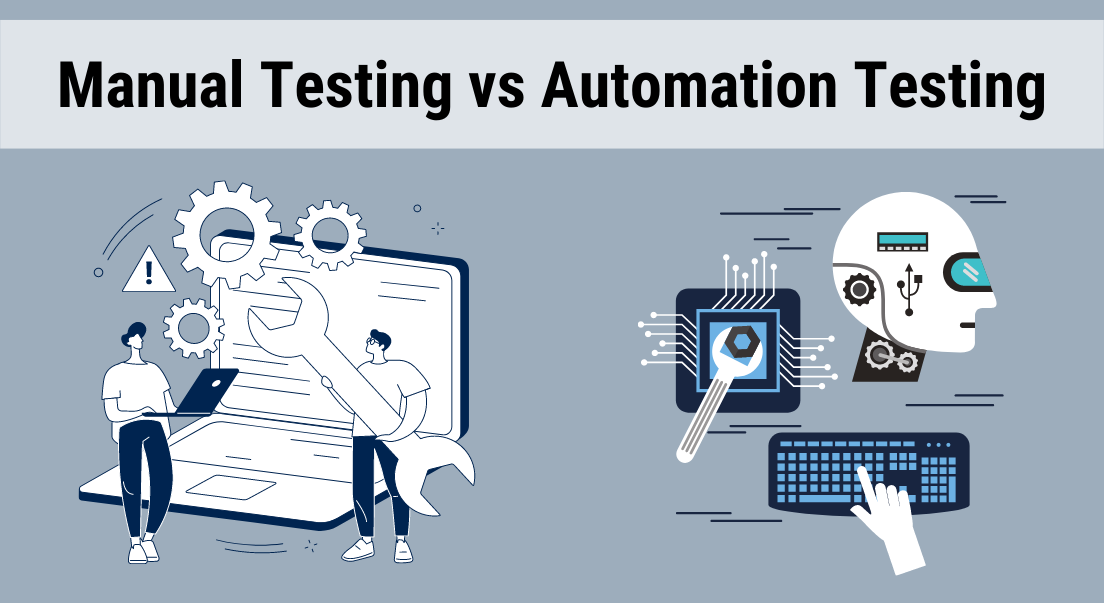Automation Testing: Secret Steps to Streamline Development Lifecycles
Wiki Article
From Manual to Automated Testing: A Comprehensive Overview to Transitioning Smoothly and Properly
In the world of software application testing, the change from handbook to automated processes has come to be an increasingly crucial transition for companies looking for to enhance efficiency and accuracy in their testing practices. As innovation remains to breakthrough, the requirement for effective and seamless computerized screening methods has never been extra important. The journey from manual to automated screening is not without its obstacles, yet when come close to tactically and with a clear strategy in mind, the benefits can be considerable - automation testing. In this detailed overview, we will discover vital actions and factors to consider necessary for an effective transition, from the first option of devices to the integration of automation into existing process. Stay tuned to discover the understandings that will assist lead the way for a smoother and more efficient testing process.Advantages of Automated Testing
Automated screening offers many advantages, enhancing performance and precision in software application growth procedures. Automated examinations can be run at the same time on several gadgets and operating systems, considerably speeding up the testing phase compared to hands-on screening.In addition, automated screening ensures a higher degree of accuracy in detecting flaws. Because automated examinations comply with predefined scripts, human mistake is lessened, bring about even more trustworthy test outcomes. Consistency in screening is likewise improved, as automated examinations execute the same actions precisely each time they are run. This consistency is vital in guaranteeing that all capabilities of the software application are extensively tested, minimizing the probability of unseen pests slipping via to production.
Selecting the Right Devices

To start with, analyze your needs and goals. Comprehend the scope of your project, the technologies involved, and the ability of your group. This analysis will help you determine the features and capacities you need in your testing devices.
Second of all, think about the compatibility of the tools with your existing systems and processes. Smooth combination with your current software development lifecycle is vital to make certain a smooth shift to automation.
Furthermore, evaluate the scalability and adaptability of the tools. As your testing requires advance, the tools should have the ability to adapt and suit adjustments efficiently.
Lastly, variable in the support and area around the devices. When applying automated testing, robust support and an energetic individual community can supply valuable sources and assistance. By meticulously thinking about these aspects, you can choose the right devices that align with your needs and set the phase for an effective shift to automated testing.
Writing Efficient Test Scripts

When crafting test scripts, it is important to take into consideration the details demands of the software program being evaluated and make certain that the scripts deal with all crucial capabilities. Clear and detailed naming conventions for test scripts and test situations can improve readability and maintainability. Furthermore, incorporating error handling mechanisms within the examination manuscripts can aid in determining and dealing with problems promptly.
In addition, organizing examination manuscripts into modular elements can boost reusability and scalability, reducing redundancy and boosting performance in test manuscript upkeep. Routine evaluations and updates to examine manuscripts are crucial to equal evolving software application requirements and capabilities. By adhering to these principles, testers can create robust and reliable examination manuscripts that contribute substantially to the success of automated testing processes.
Integrating Automation Into Workflows
Efficient visit our website assimilation of automation tools into existing operations enhances processes and boosts efficiency within software advancement cycles. When including automation right into process, it is vital to identify repetitive jobs that can be automated to save time and decrease human mistake. By seamlessly incorporating automated testing devices like Selenium or Appium right into the software program growth lifecycle, teams can achieve faster comments on code modifications, causing quicker bug discovery and resolution. This integration enables continual testing throughout the advancement process, guaranteeing that any issues are identified beforehand, causing greater software program high quality. Furthermore, automation can be utilized to trigger examinations automatically after each code dedicate, offering instant validation and releasing up testers to concentrate on even more facility circumstances. Correct integration of automation devices requires cooperation in between advancement, screening, and operations teams to establish a unified operations that enhances effectiveness and effectiveness in delivering high-quality software.Ensuring a Smooth Shift
Efficiently use this link transitioning to automated testing involves thorough planning and careful execution to optimize and minimize interruptions effectiveness in the software program development process - automation testing. To make sure a smooth change, it is important to start by carrying out a thorough evaluation of the present testing procedures and determining locations where automation can bring one of the most substantial advantages. Involving with all stakeholders early on at the same time, consisting of programmers, testers, and task supervisors, is crucial for garnering assistance and buy-in for the automation initiativeCommunication is key throughout this change stage. Clear communication of the goals, benefits, and expectations of automated testing helps to handle any type of resistance or worries that may develop. Furthermore, offering sufficient training and resources for employee to upskill in automation devices and methods is crucial for making sure a successful transition.

Final Thought
In verdict, transitioning from guidebook to automated screening offers numerous benefits, including enhanced effectiveness and dependability. By choosing the proper devices, composing efficient examination manuscripts, and incorporating automation effortlessly right into workflows, organizations can guarantee a effective and smooth shift. It is important to accept automation as an important property in software screening processes to enhance overall high quality and efficiency.In the world of software application testing, the shift from manual to automated processes has actually become a progressively essential change for companies seeking to boost performance and precision in their testing methods. Automated tests can be run concurrently on multiple devices and operating systems, considerably speeding up the screening phase contrasted to hands-on testing. Consistency in screening is likewise improved, as automated examinations carry out the exact same steps specifically each time they are run.To guarantee the successful execution of chosen screening devices, the creation of reliable test scripts plays an essential function in validating the capability and performance of automated procedures - automation testing. By complying with these concepts, testers can produce durable and efficient test scripts that add substantially to the success of automated testing processes
Report this wiki page